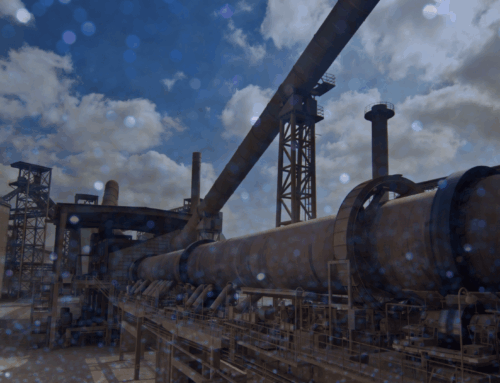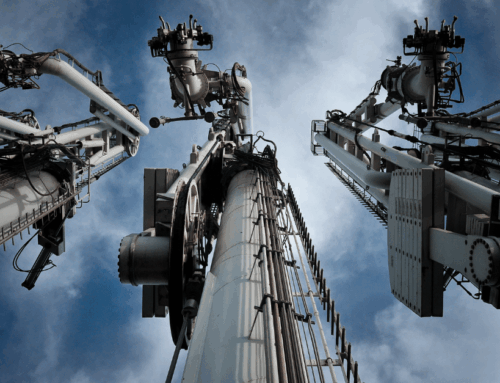Safety and Efficiency
KHNP is the largest Korean electric power company, generating approximately 31.5% of the total generated electric power in Korea. KHNP operates 82 units that include thermal, solar, hydro, geothermal, bio, and hydrogen power plants.
These plants combine for a total production capacity of 27,857 megawatts of power.
Challenges
With growing public interest in plant activity and the increase in operational data available at these plants, the spotlight on plant safety has never been stronger. And these realities are exactly what led KHNP to heighten its focus on ensuring the technical safety of its facilities and how it managed data from its centralized control and monitoring center.
Due to limitations experienced from its previous system, KHNP required additional solutions to achieve its goal of improving enterprise-wide plant operation. These limitations created two primary obstacles for KHNP’s fleet-wide operation.
Primary Obstacles for KHNP
Short Lead Time
Every second of any power plant’s operation is critical. Assets across the plant floor transmit vast amounts of data. Using this real-time data, traditional alarms alert plants when a value exceeds a high or low limit. These alarms alert a plant before equipment enters a critical state that can lead to destruction, part failure, or unplanned outages. Unfortunately, by waiting for alarms that are responding to existing conditions, plants are limited in the amount of lead time they have to plan and respond.
To discover such issues sooner, the alarm set points can be adjusted, but for KHNP the alarms would then occur so frequently that the alarms lost their meaning. KHNP needed smart early warnings that provided increased lead time.
Data Infrastructure for Predictive Maintenance
KHNP understood the necessity of predictive maintenance as maintenance based solely on the age of the equipment ignores the fact that a majority of equipment failures are random. They needed a proven early warning system that predicts plant condition, is able to interface with their plant monitoring system, and integrates with other existing systems. KHNP wanted to manage critical and operational equipment data through a predictive monitoring infrastructure, enabling enterprise level collaboration at their centralized center at headquarters.
Solution
In 2016, KHNP installed HanPHI in its centralized monitoring and diagnostics center, and then implemented HanPHI into its central monitoring at headquarters. HanPHI captures valuable information embedded in the ocean of plant data generated by KHNP’s numerous plant locations. HanPHI predicts upcoming equipment failures based on dynamic analysis of expected and real-time values. HanPHI’s innovative and patented intelligent predictive modeling technology enables the prediction of potential and hidden failures. Every day, KHNP leverages this powerful solution to achieve operational excellence. Understanding its value, KHNP added the installation of HanPHI into its plans for four new plants under construction in 2018.
Benefits
Increased Lead Time
With a clear view of impending equipment failure, KHNP can prepare well beforehand. With increased lead time, KHNP actively maintains valuable assets, eliminating failures that previously led to costly downtime. By analyzing the current operation status of the plants, HanPHI generates early warnings that KHNP uses to act or plan maintenance. HanPHI also monitors all the equipment in real time, constantly learning the normal patterns of individual equipment, and identifies even the slightest sign of impending failure in advance. Once HanPHI detects any sign of failure, KHNP uses the SuccessTree to view relevant equipment and perform root cause analysis. With this valuable information, KHNP utilizes predictive maintenance resolve issues days, or weeks, before the critical event.
Optimized Operation and Maintenance
With HanPHI, KHNP established their predictive maintenance process. The innovative central early warning system enables KHNP’s headquarters to monitor all power units and provide operating and maintenance recommendations to their sites at the right time. Operations and management access an intuitive and clear overview of entire plant floors, including abnormal conditions. This enables optimal plant operation and maintenance, as well as operational excellence.
In one instance, HanPHI helped prevent a potential failure at a 1,000-MW power plant by detecting a pressurizer safety system issue in advance. HanPHI generated an early alarm allowing an operator to perform valve gagging maintenance before a serious problem could occur.
About KHNP
KHNP supplies electricity in South Korea “in a stable manner to enrich the lives of people and contribute to the growth of the national economy.” The organization generates electricity at its thermal, hydro, solar, and wind sites. As a result, they product 31.5% of the total generated electric power in Korea. KHNP is in the process of constructing new plants both domestically and internationally and developing its renewable
energy sources through partnerships with local governments.
Its 10,000+ employees continuously strive to demonstrate its core values through the day-to-day operations of power generation. KHNP focuses on Technology, Respect, Ultimate Safety, Social Responsibility, and Timeless Integrity. This focus enables them to continue being the largest power generating company in South Korea.
HanAra Success Stories
Beyond Reactive Maintenance: A Smarter Approach to Wind Farm Operations
Wind energy has established itself as a reliable renewable power source across the globe. But maintaining a fleet of turbines presents different challenges compared to traditional, centralized power generation facilities. Some of the operational [...]
Biomass Plant Enhances Operational Excellence with HanPrism
In the renewable energy sector, biomass facilities face increasingly complex operational challenges that require sophisticated data management solutions. For one facility, growing compliance requirements and the desire for operational improvement led them to seek [...]
Embracing Change: How a District Energy Organization Transformed Their Data Management with HanPrism
In the world of organizational operations, the concept of "buy-it-for-life" is a rare luxury. While organizations strive for longevity in their tools and solutions, the reality is that technology evolves and so must the [...]









